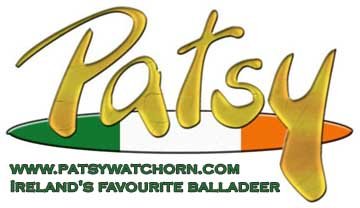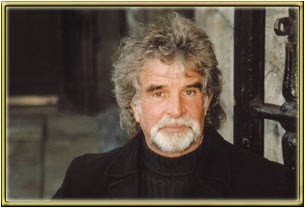|
Home
away from Home
The
Dubliners in Vienna
September 2012

There isn’t a place as intimate on the tour
circuit as the Metropol in Vienna. That, plus the fact that the Vienna
gigs usually set the standard for what to expect after the summer break,
made us look onto the five, six or seven drunken nights very accurately
for the past few years. And the year of the big 50th anniversary will be
no difference. Still we tried to deliver a different view on these nights,
focusing on a few highly interesting key issues, instead of penning a
run-of-the-mill review. Your authors here will be trusted writers Enid and
Renata, and yours truly, your webmaster, will tie the pieces together.
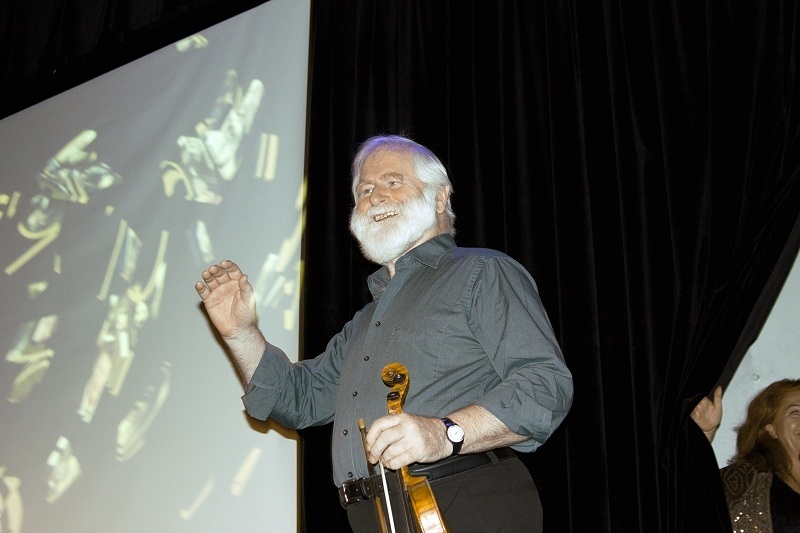
I have seen a couple of gigs in the past few years and I honestly never
had the feeling that the band ever could lose its popularity; actually, The Dubliners are one of the very few
attractions I’ve seen repeatedly that gave you the distinctive feeling
that their fan base grows every year and that there is a stream of new,
young fans pouring in. But not to take my word, let’s see what Renata
had to say on that:

I only saw the audience in Vienna twice and I first saw The Dubs live in
Munich in 2008. After that I saw them nine more times, therefore my
experience of audiences isn’t that wide. On that first occasion in
Munich I was sitting between a young woman in her twenties, who’d come
with her parents and her boyfriend (and who drank at least five pints of
beer all through the show) and an elderly man, probably in his seventies.
The three of us sang and clapped and laughed and I was thinking, there
can’t be many shows that attract such a variety of people. There were
people of all age groups and what struck me most were the children. There
are lots of children at every gig, even at Vicar Street where children are
not supposed to be. And they enjoy themselves like mad. Patsy has a way of
playing peek-a-boo with them from behind his bodhrán, and they love it. I
don’t know if that is what Éamonn meant when he said in an interview
that they were getting younger audiences… Jokes apart, there really are
many young people at The Dubliners’ concerts. As the same Éamonn would
say, not bad for a band of auld fellas!

This being a difficult year for the band, we were very interested to see
how the audience would greet them. Most people knew Barney passed away,
but I still saw a few white and shocked faces, and throughout the audience,
I saw quite a few tears shared when he came up on the screen for “his”
first song of the evening. Yet we want to concentrate on the very first
moments of the show and let us hear what Enid remembered:
The opening minutes of the 50th anniversary concerts are rather
spectacular: a series of short video clips collected from international
television shows of earlier years and showing various celebrities
introducing the former Dubliners on stage. It builds up the overall
suspense in the venue, and increases your own excited anticipation as you
wait for the present Dubliners to finally appear.

The Viennese audience is an extremely keen and exuberant one at all times,
as I experienced last year on my first ever visit to the Metropol. And it
was in top form from the very first moment after this very effective
introduction. The last "The Dubliners!" had barely resounded
from the screen, John Sheahan, leading the way, had hardly taken one step
onto the stage, when the fans burst into thunderous, roof-raising applause
and enthusiastic cheering.
Renata looked at it from a different angle, but the overall message is the
same – The Dubliners are one of the most-loved bands in the business:

The audience in Vienna is one of the best (not least because I’ve three
times been in it). Kathrin was saying on the forum that September
wouldn’t be September without The Dubs in Vienna. The venue is
relatively small (that’s one of the reasons why they have six or seven
gigs there as a rule) and the stage is low and very close. The Dubs are
there with you! The people welcome the band as old friends and they
certainly don’t need any warming up… Especially this year they
didn’t, as they knew it would be the first time without Barney and it
was important to make the Dubs feel their participation. This year, on the
Saturday, there was a group of young Irish people who - as I understood
– were living and working in Vienna and had founded a Gaelic Football
team. Their contribution to the gig was uproarious, especially when Patsy
greeted them from the stage. But on the whole, the affection that the
Vienna audience shows the Dubliners every time is extremely warm and very
real.”

The Dubliners without Barney was impossible to imagine – still they went
on. Grudgingly we have to admit that the fan generation before us had to
accept the fact that one earth-shattering day, there wasn’t Luke anymore
in the lineup, that Ciaran passed away, that Ronnie or Paddy left for new
ventures. The fans from Day One have experienced that several times before,
for many of the younger people it was a new experience. Still the band
waltzed on, so to speak. Until now, there never has been any departure of
any kind that stopped the band. But let’s give Enid ample space to
elaborate what it meant to miss Barney and how the gigs since that day
have developed:

My first Dubliners' concert without Barney was in Paris, five weeks after
his death. The folk music world was still mourning the sudden passing of
one of its greatest musicians. Fans and friends everywhere were still numb
with shock. And it was an inconceivably difficult time for The Dubliners
themselves, who had decided to fulfill all commitments planned for the
50th anniversary, and to continue the tour in Barney's honour. On that
evening they demonstrated once more their respect for their fans -
no matter how adverse the situation, no matter how sad the circumstances,
no visitor should be disappointed, no visitor should leave the venue
without a smile on his lips. And indeed, at the end of the concert in
Paris one could see only happy faces in the audience.
For a few hours The Dubliners' own sadness had taken a back seat, their
unfailing loyalty to their fans had once more come to the fore.
Nonetheless, for a vigilant observer, especially one near the stage, it
was obvious that it had been anything but easy for them.

Several months have passed since Barney's death. There is a lot of truth
in the saying "Time heals all wounds". Of course Barney will
never be forgotten -
his spirit is still present, and always will be,
just as the legacies of Luke and Ciarán and Ronnie will always be an
integral part of The Dubliners' concerts. But the terrible shock and
sadness have been overcome. I experienced it myself in Vienna - the
video "Fiddler's Green" no longer moved me to tears, as it had
done in Paris, but to a pleasant feeling of gratitude, to have heard this
wonderful musician live so often, and to have had the honour of meeting
him in person. And I saw the same change on stage - The Dubliners
had recovered much of their accustomed easiness, they appeared much more
relaxed, light-hearted and good-humoured. Some of the well-known banter
across the stage had returned ("just wanted to make sure we're all
playing the same tune"), and John, as well as adding his very
touching poem "Banjo Barney" to his repertoire, had at least one
amusing Barney anecdote to tell every night. He had even taken over the
role of creating Barneyisms ("Gerry O'Connor is probably one of the
best banjo players in the world - if not in Ireland!") As to
the new man - although introduced as their guest every night, it was
more than obvious that in the meantime Gerry feels entirely at home with
The Dubliners, and enjoys every minute on stage with them.

Enid’s closing comment directly leads to the most burning question
regarding the “show” itself: How will the new kid on the block do?
Renata sums that up in a few precise words:
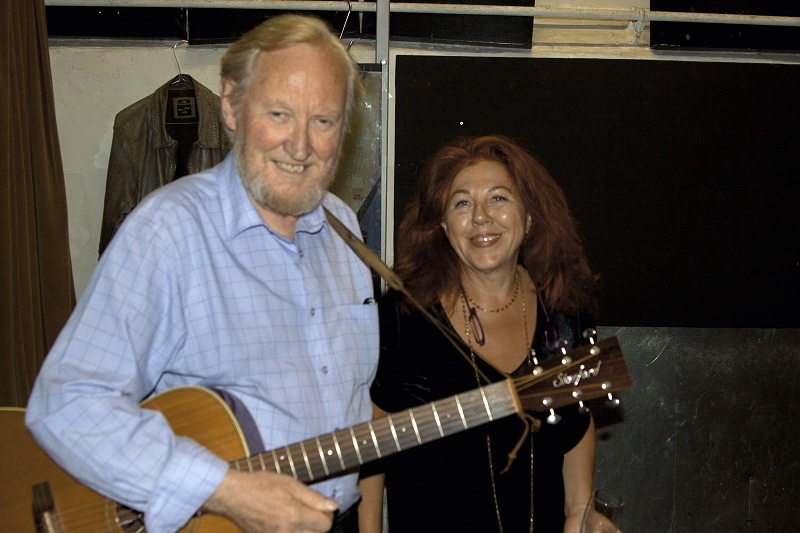
Gerry O’Connor was Barney’s disciple and Barney thought the world of
him. I was very curious to see him in action – it must be incredibly
difficult, psychologically speaking, to replace a legend on stage, and one
you knew well.

The first thing I thought when I saw him was, “That’s good, he’s
very different from Barney!” Because there will be people who make
comparisons, and his resembling Barney too closely wouldn’t have been a
good thing. Gerry is very tall, for one thing, he plays standing and is
never still (which makes it hard to take pics of him, as he’s been told!).
Then his banjo is electric and the sound is different. Gerry is perhaps a
little less traditional in style and more dynamic. And he’s very, very
good. The Dubs couldn’t have made a better choice. And Gerry and Éamonn’s
tribute to Barney has become part of the legend.

Enid is nip and tuck (or neck to neck, since the first term changed its
meaning a bit in recent years) with the above observations:

Barney McKenna called him his "best pupil", for John Sheahan he
is "one of the best tenor banjo players in the world - if not
in Ireland!" Indeed, Gerry O'Connor is a brilliant musician and a
banjo virtuoso.
Admittedly, the very first time I saw him perform, being so accustomed to
Barney's gentle, composed manner of playing, I was for a moment distracted.
Unlike his "hero", as Gerry describes Barney on his website, he
generally stands on stage, and is constantly in motion. Something which
both my camera and I took a while to adjust to!
But joking apart, Gerry O'Connor's banjo-playing is fantastic and a sheer
delight to listen to. Remarkably versatile -
with what ease he
combines traditional Irish music with elements of American bluegrass. And
vice versa. Skilful - he possesses an amazing and breathtaking
dexterity. And extremely creative - now and then he surprises in the
middle of a well-known tune with a sudden and unexpected improvisation.”

I knew Gerry from seeing him perform in Dublin, so I knew what I was about
to experience. For me, he was always the quintessential “banjo player of
today”, firmly rooted in Irish folk but comfortable wherever you put him
and quick at doing his wizardry in every musical frame you challenged him.
And it was remarkable how Gerry, overflowing with admiration for the “master”,
told us and almost “insisted” that Barney was so much more than we
have witnessed at a Dubs gig - being at home in so many musical styles,
eventually doing an album with the Carter family as his last solo project
ever.

Of course we wouldn’t have a Vienna report without talking about the
music. Enid gives us a wonderful overview over the repertoire:

The Dubliners have gathered an immense repertoire of songs and tunes over
the past 50 years. A considerable challenge to choose the perfect "mixture",
to find the right balance in every concert - bearing in mind that,
although certain pieces remained an integral part of every gig, the
setlists at the Metropol were to vary to some extent on each of the "Seven
Drunken Nights".

Furthermore, due to the eight videos that are included in the 50th
anniversary tour, the number of live songs was significantly limited.
But the mix was perfect! As a contrast to the lively "Peggy
Lettermore", from his native County Galway, Seán included one of his
beautiful Gaelic ballads in his programme each night ("Fáinne Geal
An Lae", "Cill Chais"); the subject "emigration",
which has always played a significant role in Irish history, was
represented at least once in each concert ("When The Boys Come
Rolling Home", "Shores Of Americay"); on the occasion when
Seán performed his great rendition of "Back In Durham Gaol", he
gave the even more fast-paced and breathtaking "Rocky Road To
Dublin" a miss, and sang instead of "Eileen Óg", the pride
of Petravore.

In keeping with the motto of the Vienna concerts (and although the subject
was well represented in the videos) a couple of "live" drinking
songs were indispensable!
Reminiscing about past times: a frequent theme in folk songs, always an
important part of The Dubliners' music, but particularly appropriate in
their anniversary year. This was Patsy's domain - his own
"Dublin In The Rare Auld Times" was a must of course, as well as
"The Ferryman" which he exchanged on one evening for "The
Town I Loved So Well".
And because, as Seán explained, there just wasn't enough time to perform
all the other songs and tunes they would have liked to, they included
their little medley of some of their most popular pieces: "Black
Velvet Band", the song which rocketed them for the second time in
1967 into the UK single charts; the popular Dublin drinking song "Dicey
Reilly"; John Sheahan's own famous composition "Marino Waltz";
and last but not least "The Irish Rover", their great success
with The Pogues in 1987, the year of their 25th anniversary.”

There was, like a few years before, a strong multimedia component to the
show, but it just wasn’t a repeat of it – they took care that the
“on screen program” saw changes too. But we ain’t talking about a
rock or pop group, so we had to let Renata ask (and, thankfully, answer)
one question:
Is the slide show and the interaction between The Dubliners on video and
The Dubliners on stage a bit too much for a rough and tough folk band?...

This “technological” addition to the show has only been used for two
tours – The “A Time To Remember” tour and the 50th anniversary one,
two very special occasions. It has always worked very well. It’s a way
to have the deceased members of the band on stage with the present line-up
and a way to show the passing of time, the changes, and at the same time
the unvaried quality of the performance. Sometimes (in Paris, for instance)
the slides were projected right over The Dubliners themselves and the
lights played eerily on the bodies of the performers. In Vienna, the slide
of Barney playing the banjo by his fireside appeared next to Gerry and Éamonn
so that it looked as if the three of them were playing together. Sometimes
the choices are, perhaps voluntarily, a little funny. The first time I saw
the group play and sing “Maids When You’re Young” on the background
of Luke in his thirties singing the same song I couldn’t repress a smile…

The band may be, or may have been, rough and tough, but the slide show is
an effective scenic device, and a very useful one when it comes to telling
a story that has been going on for fifty years…

We didn’t touch on favorites until now, but with two prolific writers at
hand, it would be foolish to neglect their very own impressions. When it
comes to listening, Enid goes back a few years and could tell us if her
listening habits and likes have changed and how the Vienna nights compared
to that:

I have always loved the "music" of The Dubliners - the
jigs and reels and hornpipes that involuntarily take control of your hands
and feet, and make sitting still utterly impossible. That hasn't changed
in the (almost) five decades since I first heard them on the radio way
back in the 60's - even after so many years and innumerable concerts,
I could listen to the "The Belfast Hornpipe" and "The
Swallow's Tail" until the cows come home. The set of reels ‒
"Cooley's, The Dawn, The Mullingar Races" - which has
become an integral part of their present programme in recent years,
delights me every time I hear it, and I always look forward to the moment
when each of The Dubliners pulls up a chair for this medley. But the
Vienna concerts held for me one additional musical highlight: the
brilliant bluegrass/Irish duet for banjo and guitar -
"Billy In
The Lowground" and "The Moving Cloud" -
a masterpiece
from two virtuosos! With what obvious pleasure Gerry and Eamonn performed
together, their enthusiasm was virtually contagious, and what fun it was
to watch and listen to them!

Out of The Dubliners' vast repertoire of songs there are always a few of
my own personal favourites in every concert. Vienna was no exception. One
particular song will always retain a special place in my memory: Seán
performed "Back In Durham Gaol", which was written by County
Durham's own folk singer and song-writer Jez Lowe, and recorded by The
Dubliners on their album "Further Along". I have always loved
this humorous song, since it reminds me inevitably of my own roots (the
county of course, not the prison!) but this was the first time I had heard
it live in a Dubliners' concert.
But there were other highlights. The combination of a fascinating language
and a fascinating voice - you don't need to understand the lyrics,
to be mesmerised by Seáns emotive rendition of Gaelic ballads. In Vienna
I had the pleasure of hearing two of the most beautiful: "Fáinne
Geal An Lae" and "Cill Chais". And I was equally mesmerised
by Patsy's wonderful version of "The Town I Loved So Well", Phil
Coulter's heart-rending lamentation on the changes and troubles in the
beloved Derry of his childhood.

Asking Renata what impressed her will generate a quick response, focusing
on the current program played every night:
“To Barney” played by Gerry and Éamonn is high on my list this year.
It’s actually the combination of two tunes, “Billy in the Low Ground”
and “The Moving Cloud”, a kind of mix of bluegrass and Irish
traditional. Your feet and hands start moving of their own accord, you
can’t stop them! The two performers tackle the tune with energy (Éamonn
standing again like in the old days) great skill and no apparent effort.
The audience goes crazy. I go crazy. And we all feel it’s a great choice,
something cheerful to remember Barney as he was, an optimistic, happy-go
lucky fellow.

I always like the way Patsy “conducts” the audience over
“Finnegan’s Wake”. This year, during the second gig I was at, Éamonn
and Gerry started bickering over which side of the audience was doing
better. Somebody on Éamonn’s side kept getting the clapping wrong (on
purpose, one would think) while on Gerry’s side everybody was doing
well, and Éamonn pretended to get angry every time “his” side of the
audience didn’t prove up to standard (that is, every time the refrain
ended). In the meantime, Patsy was keeping an eye (and an ear) on the
audience in front. The other two went on arguing even after all the others
had sat down and were waiting to do “Cooley’s Reel”, “the Dawn”
and “The Mullingar Races” so that John said at one point, “Well,
I’m starting… when you’re ready, at your convenience, you can join
me…” I love the banter and jokes between songs. They’re part of the
show and such a good part.

I also enjoy John’s own compositions, very much. “Farewell to Harstad”
that John plays in memory of the young people who were murdered in Norway,
is always very moving, but I also like all the others. And I like John’s
hand on the fiddle – I’m no expert, but I’ve seen many fiddlers and
I can tell when somebody’s a class of his own. John is.

Still discussing the repertoire we had to take a look at the closing of
the show. While Molly Malone has earned hymn-like status over the years,
was it a good choice as the finale of the night? The answer – I don’t
expect anyone to be surprised – is a clear yes, and we all know that,
but we finally had to put our finger on it and ask “Why”. Renata took
a pragmatic approach that is untouchable in its logic:

“Molly Malone” is Dublin’s most famous song and The Dubliners are
Dublin’s most famous band, therefore a gig without Molly Malone would be
incomplete, especially a gig belonging to this tour. One could argue that
it’s always been sung, even before, and that it is time to change. I
wouldn’t agree. We the audience expect “Molly Malone” as we expect
“Whiskey In The Jar” some time near the end of the second half. A
Dubliners’ gig wouldn’t be the same without “Molly Malone”.
Enid elaborates equally convincing why she doesn’t have any problems
with the auld lass’ Molly:

"We've had a lot of requests for songs tonight, but we've decided to
sing this one for you." A familiar remark that we've all heard in a
similar form at the end of a Dubliners' concert. Of course Patsy is
referring to "Molly Malone", the unofficial anthem of Dublin's
fair city. Could there be a worthier closing for a concert of the musical
ambassadors of that same city? Following straight after the much-loved
"Wild Rover" -
the very first song on their very first
album. There is no doubt that the fans love it -
and expect it! And
not just the Irish fans. A couple of years ago Al O'Donnell, standing in
for Patsy during the German tour, introduced "Wild Mountain Thyme"
as the final encore. A beautiful song, and one of my all-time favourites.
Nevertheless, I left the venue humming "Molly Malone" ...

Closing our review, in a bittersweet year where triumph and tragedy were
closer together than ever imagined, we have to come back to Barney. We
don’t want to leave you with the usual “Hoooray!” in closing this
report, we want to leave you with a touch of the feelings ranging from
happiness to sadness that will forever be defining this 50th anniversary
year. If they one day do the biographical movie of the Dubliners, they
will find that no script can top the story life has written this year. Our
final input comes from Renata:

Barney died suddenly and the shock was great. The Dubs were actually
supposed to play together shortly after his death and I can imagine, and
to some extent I witnessed, the state of mind of the other members of the
band. Grief, and the wish to be left alone, and not being allowed to.
People to see, condolences to respond to, and, most of all, the tour. What
do we do now?

The decision to go on was almost inevitable. The tour was in full progress,
the tickets were sold, the venues were booked. Definitely too late to stop
now…

The first time I saw the Dubs on stage after Barney’s death was in
Drogheda, in June. Everybody knows about the changes in the act – Gerry
O’Connor at the banjo, lots of photographs of Barney, Barney on video
singing “Fiddlers Green” and/or “I Wish I had Someone To Love Me”,
and Gerry and Éamonn’s tribute to Barney. I know it was still very
difficult for them to remain apparently unmoved with Barney singing behind
them. I know they sometimes automatically looked for him on stage.

But some of them are the people who performed after Ciarán had collapsed
on stage, who performed with a dying Luke, after Luke’s death, after
Ciarán’s death, after Ronnie’s death. They know their job. I detected
sadness and much strength of will, and the show was moving but also fun.
One can’t mope on stage.
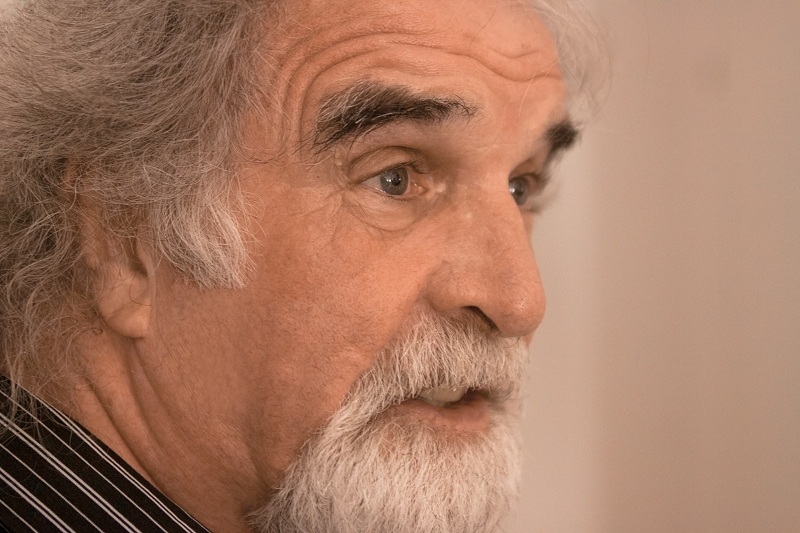
Today, John has turned his grief into poetry, and there’s a poem about
Barney among the ones he recites to remember his dead friends. Gerry has
become more self-confident (and is slowly getting used to the recognition
he deserves), Patsy is looking up at the screen to Barney with deep
friendship, Seán (typically) only looks up when not in the spotlight and
hidden in the darkness of the back end of the stage, Éamonn has a photo
of Barney on his guitar. The show goes on, and Barney’s still there,
maybe chuckling to himself and saying, “I told
you it was too late to stop now!”
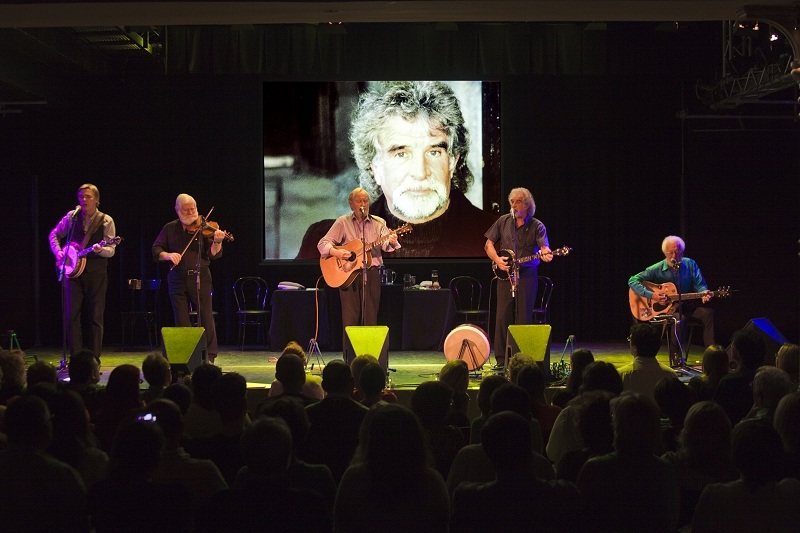
Report
by Enid, Renata & your webmaster moderating; pictures by Enid & Helmut and
Rare Auld Times Entertainment (lookup individual
copyrights in the gallery!)
Dedicated
to B. from E., R. & P.
|
